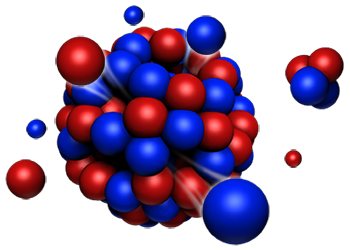Speaker
Description
During operations at the European Spallation Source (ESS), the high power proton beam will generate penetrating fast neutrons in the tungsten target, creating a significant inventory of nuclides in the target and adjacent components and structures. A systematic process has been executed to identify, evaluate, and prevent or control accidental events that potentially create a radiological hazard to the public, environment, or workers.
In the original qualitative analysis, several hundred top events associated with ESS Target Station operations were identified as having the potential to lead to scenarios with radiological consequences. From these initial events, 22 were selected for in depth accident analysis and were assessed to determine the potential radiological consequences and identify any necessary risk reducing measures. For each, a quantitative assessment was made of the likelihood of occurrence, the inventories and material at risk, the event development, the material released, and the unmitigated radiological consequences. This led to the selection of radiation safety functions (RSFs) to either prevent or mitigate the hazardous scenarios. Subsequently, structures, systems, and components (SSCs) that perform each RSF were assigned a safety class and role within the defense in depth strategy for the Target Station. This classification then determined requirements for the SSCs in terms of design, quality, and reliability.
Since the initial analyses, there have been new developments in the ESS radiation safety analysis and classification process. In particular, application of the deterministic approach to the analyses has been refined, the impact of SSCs present during normal operations has been included, and sensitivity studies have been added to the analyses to more thoroughly evaluate the impact of assumptions applied. In addition, analysis with respect to the consequences for the public have been separated from that with respect to the workers, with worker analyses permitted to apply a more probabilistic approach. Finally, system classification, with respect to regulations, is now determined solely by the analysis of the radiological impact with respect to the public. As such, the classification of many target systems and the corresponding requirements have changed since the initial assessments were performed.
The updates to the Target Station radiation safety analyses will be described, with emphasis on the changes to the process and the subsequent impact of those changes. Results from the accident analyses for several events, the radiation safety functions identified, and the classification of SSCs will be explained. In addition, new events under analysis and the strategy for evaluation of maintenance activities will be discussed.

